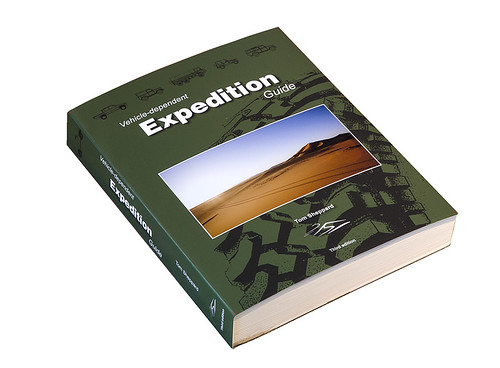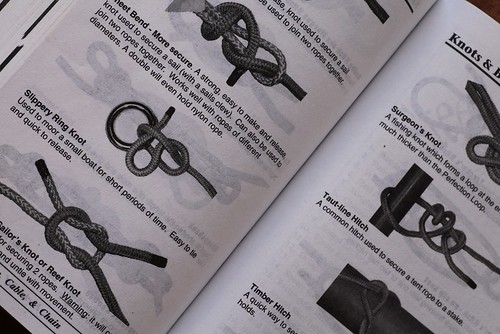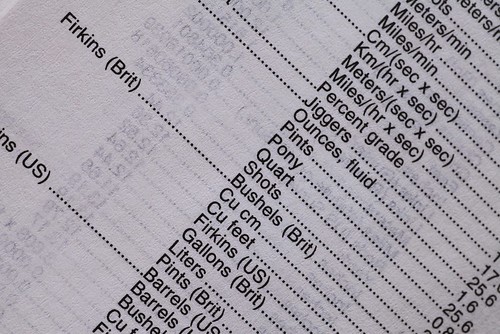OVERLAND EXPO IS HERE TO HELP WITH A HANDPICKED LIST:
Threshold Provisions energy bar subscription (from $12/month)
Remember fruit of the month? Or, worse, fruitcake of the month? This is better. Every month your lucky recipient will receive a selection of four of Threshold Provisions’ delicious, all-natural energy bars (other options are available too—salmon jerky anyone?). Give the gift that keeps on giving energy.
Somewhere Else Tomorrow DVD ($19)
A beautifully shot story of one man’s journey, not only riding around the world, but making his way as he travels around the world. This film is guaranteed to inspire any rider considering a journey of this kind and might make him re-think how to achieve it.
OutdoorX4 subscription ($25)
Among several good overlanding magazines, OutdoorX4 is the one that most concentrates on simply getting out there and having a wonderful time. You won’t feel like you need some über expedition vehicle to participate. Now starting its second year, each issue gets better.
ADV Moto subscription ($29)
Find the latest industry news and product reviews for adventure motorcycles that will take you to on a weekend ride or around the world. Also indulge in stories from riders who have traveled off the beaten path.
Chaos in Harmony by Alison DeLapp ($49)
An inspirational, lavishly photographed account of Alison’s 16,000-mile solo motorcycle journey from the U.S. to the tip of South America. Aside from a short introduction to each country, Alison lets her images do the talking, and they have a lot to say. Worth of coffee table placement and frequent browsing.
Tsuga Large Catchall ($55)
While it’s not sexy enough to warrant giant comparison tests, a heavy-duty hold-all-cum shopping bag is one of the most useful items you can have on a long overlanding journey. Groceries, car parts, firewood—you name it, the stout 18-ounce vinyl of the Tsuga will handle it.
Moto-skiveez Adventure Skiveez ($59)
Long days in the saddle has your rear end begging you for another? Chances are you are wearing a pair of Adventure Skiveez. This innovative riding underwear has padding in all the right places for both on road and aggressive off road riding.
Equipt/National Luna clip-on 9-LED light ($64)
I have a hard-mount version of this light in the cargo area of my FJ40, and it’s superb. The clip-on version, with a 27-foot cord, is even more versatile. The low (62 lumen) setting will light a dining table; click to high (176 lumen) to light the entire dining area.
Mosko Moto 30L waterproof scout duffle ($69)
For the minimalist packer or small bike enthusiast, this duffle does the trick. Not only will it keep your items dry during all types of weather, it features an innovative strap system so it doubles as a backpack or shoulder bag off the bike.
Coyote Enterprises Automatic Tire Deflators ($80)
An improvement on the original excellent Staun deflators, the CE deflators will automatically deflate four tires at once, to a pressure you preset between 3 and 50 psi. Airing down is the best thing you can do to your vehicle to enhance traction, reduce trail erosion, and improve comfort.
Surefire 6PX Pro ($90)
I’ve been using Surefire lights for 20 years and have never had a failure—including one lost on a dirt road, run over for a week, then recovered. The 6PX Pro is a dual-output light (the only kind to get in my opinion) that combines a brilliant 320-lumen high beam with a camp-chore-oriented 15-lumen low beam that will last 45 hours on one set of lithium batteries. The only flashlight you need.
KinderRider Explorer motorcycle jacket ($100)
Kids deserve the same protection you do on a motorcycle. But they grow so fast it could get expensive buying new jackets every six months. The KinderRider Explorer features expandable sleeves to keep up for at least a year or two. Fully featured with vents, a thermal liner, and CE armor.
REV'IT! Sand Pro gloves ($119)
After spending a day gripping handlebars either on or off road, you know what comfortable hand protection is. REV’IT gets that with the Sand Pro gloves and offers a flexible and durable glove.
Canyon Coolers Outfitter 22 ($120)
You’ll never realize how inefficient cheap ice chests are until you try a good one. Whether you’re out for a day trip and don’t need the weight and bulk of a fridge, or just want an extra cooler in the cab, the Outfitter 22 will hold all you need—and keep it chilled with minimal ice—while not taking up a lot of room.
Anti-Gravity Batteries Microstart XP-1 ($159)
Simply put, this absurdly small lithium-ion battery/power supply is a miraculous product. We’ve jump-started a 460 cubic-inch V8 with one, and a Tacoma V6 three times in a row. We’ve even hooked three of them in series and produced a beautiful field weld (NOT recommended by the maker). Sure, you can recharge your iPhone/iPad etc. too, but its real value is insurance against ever getting stranded by a dead battery.
Mojoe Outfitter’s griddle ($195)
You know the trouble with most camp griddles. They’re too damn small. The Mojoe Outfitter’s grill solves that with over three square feet of cooking surface. It can be used on a standard Weber charcoal grill, above a propane heat source, or, on its screw-in legs, over an open fire. It’s 24 inches in diameter (and a full 1/4 inch thick) but stores flat—all 40 pounds worth of it. Titanium option?
American Camp Chair ($230)
For 20 years Roseann and I never found a camp chair that was as comfortable as our old South African tripolinas. The American Camp Chair—actually prototyped from one of those South African chairs—is superior in every way: better materials, more rigid setup, and more comfortable. The king is dead; long live the king.
Giant Loop Fandango Tank Bag PRO ($230)
Not your average tank bag. Made for the traveler in mind, the Fandango PRO has upgraded features for keeping your electronics organized and charged, as well as a concealed document pocket for easy access at the borders.
Baja Designs Squadron Pro LED auxiliary lights ($220 - $350)
Whether you want more light down the trail for a motorcycle or a four-wheel-drive vehicle, there is a Squadron Pro that will fit and hugely increase your margin of safety at night. Unlike earlier generations of LEDs, these cast an even, purple-haze-free carpet of brightness. Best of all, with a simple lens switch you can choose between fog, driving, and spot patterns.
Overland Experience package ($285 / $490)
Give an Overland Expo full-tuition education package, which includes access to hundreds of specialized classes taught by world-class instructors to help prepare for the trip of a lifetime Custom Overland Expo gift certificates for any amount are also available.
Fly fishing lessons with Hunter Banks ($375/day for two people)
Unlike some fly fishing schools, where you start on a lawn or pond, With Hunter Banks you’ll be wading in a beautiful North Carolina river and catching fish right from the start, with an expert guide coaching your technique. Prepare to be (you know this is coming) hooked. All equipment is included.
DeLorme inReach Explorer ($379)
More than a way to keep in contact with your loved ones, this satellite communicator now has built in navigation. In addition to sending and receiving messages, you can view your route using waypoints and share it with those at home.
My Camp Kitchen Outdoorsman ($579)
Nothing will make your camp feel like something out of an old Winchester ad than a proper chuck box, and the Outdoorsman is proper. The Baltic birch (or okoume) marine plywood construction is tough, but adds a nice organic touch, and the interior will hold all the vintage or modern cooking gear you own. Feeling handy? Buy it as a kit and save $175.
Tonto Trails Expedition Vehicle Rental (from $2,000)
Thinking about investing in a Sportsmobile or Four Wheel Camper? Or is your significant other unsure about this overlanding thing? Rent a fully equipped rig from Tonto Trails first, and explore some of the best of the western U.S. from their base in Durango, Colorado. Virtually everything you’ll need except food and clothing is included.
Bivouac Trailers M.O.A.B. Fort (from $5,695)
The base prices of some adventure trailers can leave you pondering whether to just buy a second four-wheel-drive vehicle to drive behind your main ride. Bivouac’s Fort offers a heavy-duty chassis and sturdy box but keeps the architecture simple to hold down the price. Of course a full range of options lets you accessorize as far as your taste and budget allow—add a tent, kitchen, water tank, electrical system, and more if you choose.
Seven Wonders of Peru motorcycle tour (from $5,995)
If you have always wanted to explore the Amazon, ride the heights of the Andes, and see the driest desert in the world, you're in luck – Peru has it all. No better place to take a 17-day motorcycle adventure packed with diverse scenery, culture and history than with Peru Motors.
EarthCruiser (from $165,000)
If Hammacher Schlemmer sends you not just a catalog, but a hand-signed Christmas card as well, perhaps you’d consider giving someone on your list a fully self-contained, globally capable EarthCruiser. Designed to fit into a standard shipping container to be transported to the continent of your dreams (or all of them), the EarthCruiser’s roof then raises to transform it into a spacious and comfortable home away from home—no, that’s wrong: The EarthCruiser isn’t a substitute; it is a traveling home.




































